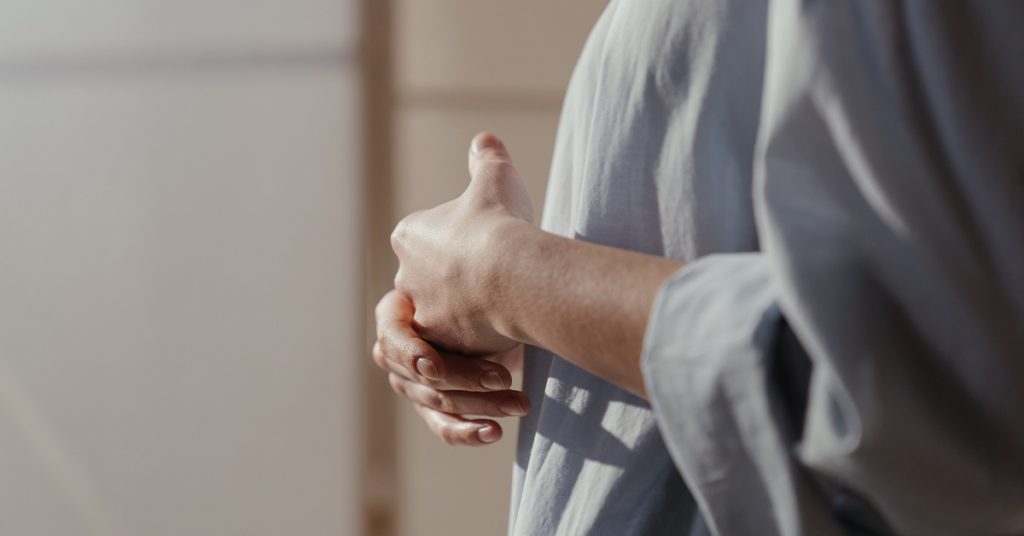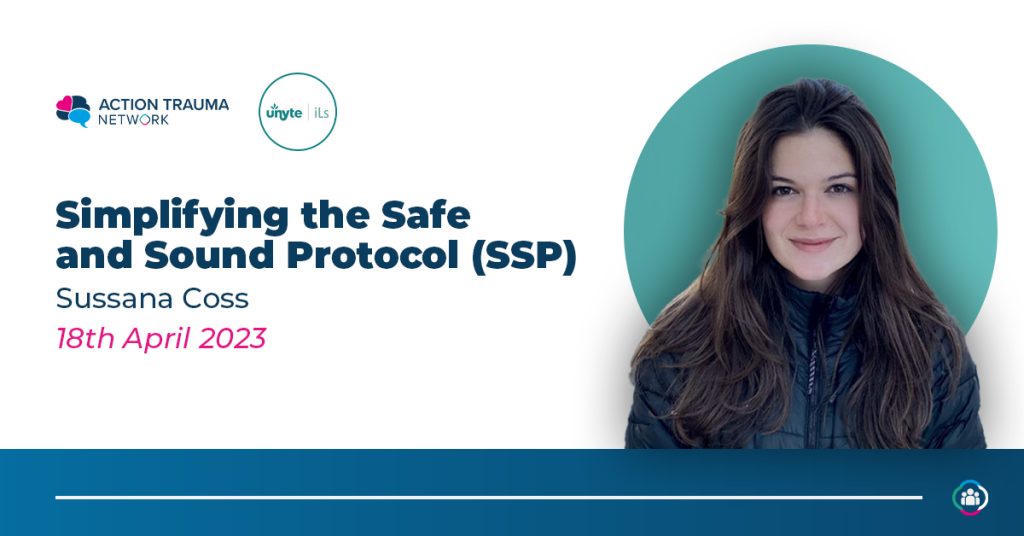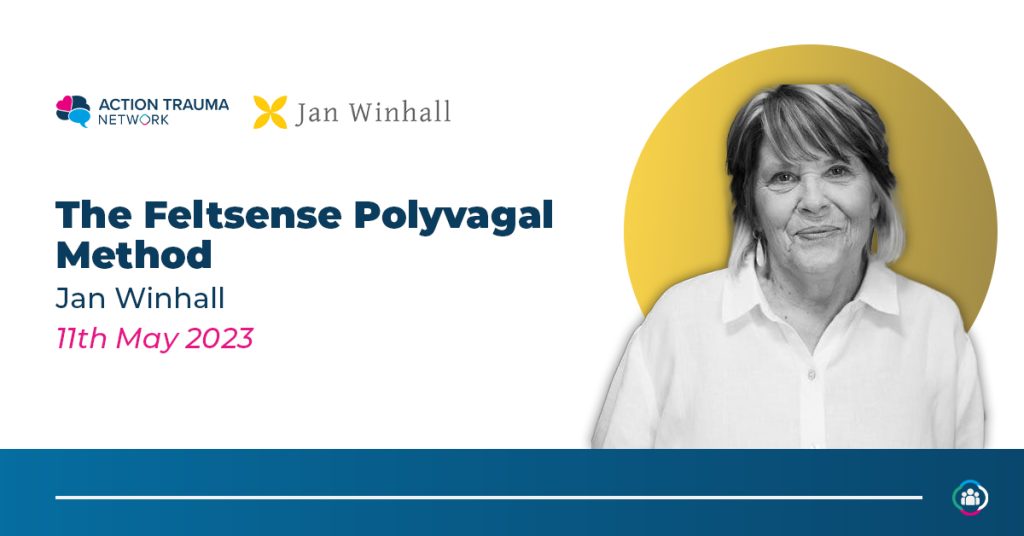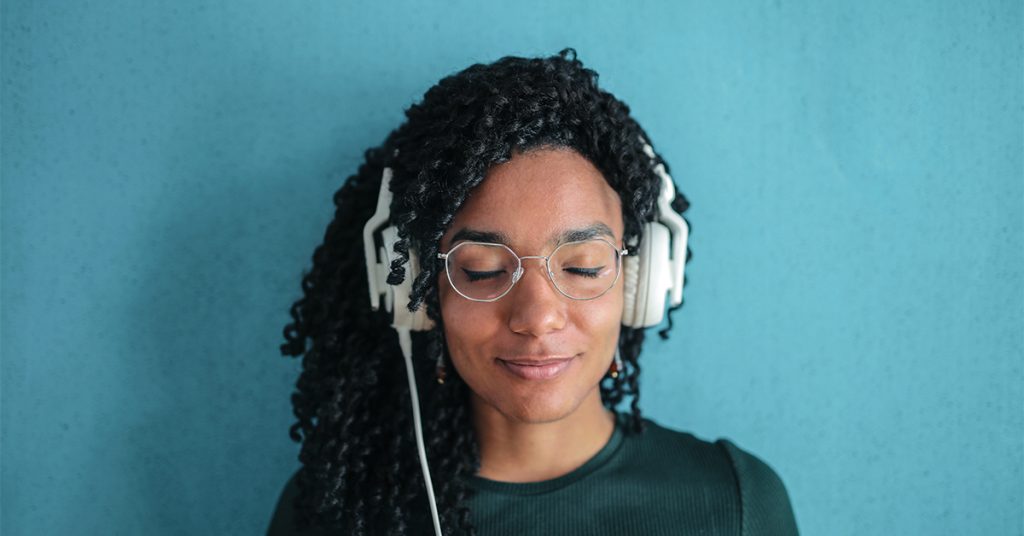Clinical Neuropsychiatry
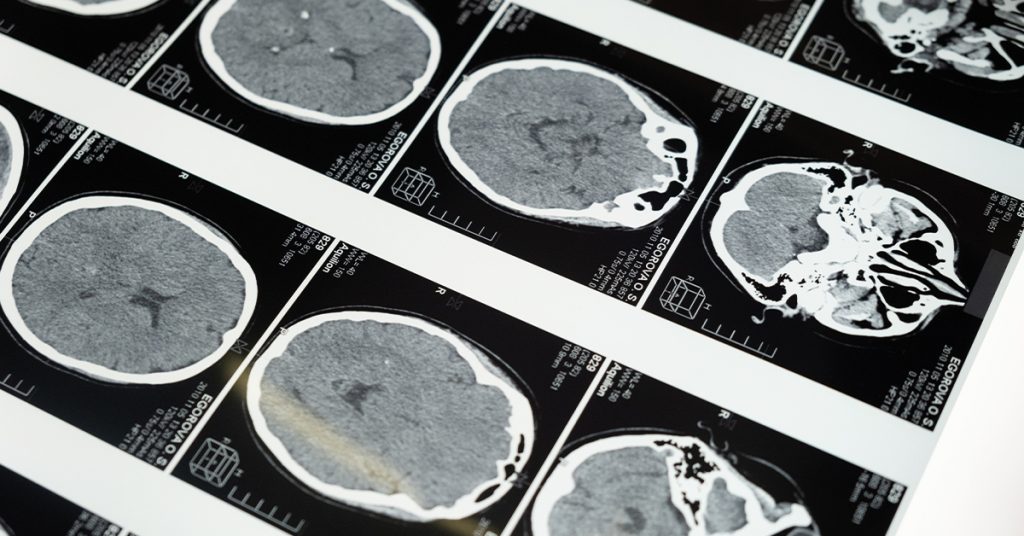
The COVID-19 Pandemic is a Paradoxical Challenge to Our Nervous System: A Polyvagal Perspective
Abstract: The spread of the SARSCov2 virus presents an unprecedented event that rapidly introduced widespread life threat, economic de-stabilization, and social isolation. The human nervous system is tuned to detect safety and danger, integrating body and brain responses via the autonomic nervous system. Polyvagal Theory provides a perspective to understand the impact of the pandemic on mental and physical health. This perspective highlights the important role of the state of the autonomic nervous system in exacerbating or dampening threat reactions to the pandemic. In addition, the theory alerts us to the impact of clinical history (e.g., trauma) on autonomic regulation as an important compounding risk factor lowering the threshold to behaviorally and physiologically destabilize in response to the pandemic. The theory provides a strategy to dampen the adverse reactions to threat (e.g., acute stress disorders) through portals of social engagement that evolved to down regulate defenses to promote calmness and connectedness.
Key words: SARSCov2 virus, COVID-19 pandemic, polyvagal theory, nervous system, autonomic regulation Stephen W.Porges1, 21 Traumatic Stress Research Consortium, Kinsey Institute, Indiana University Department of Psychiatry, University of North Carolina at Chapel Hill Citation: Porges, S. W. (2020). The COVID-19 Pandemic is a paradoxical challenge to our nervous system:
a Polyvagal Perspective. Clinical Neuropsychiatry, 17(2),135-138. CN20200220 Copyright: © Clinical Neuropsychiatry
This is an open access article. Distribution and reproduction are permitted in any medium, provided the original author(s) and source are credited. Funding: None. Competing interests: None Corresponding author Stephen W. Porges, PhD Indiana University, Kinsey Institute Bloomington, Indiana E-mail: sporges@indiana.edu
The pandemic impacts on our biological imperative to connect: As the COVID-19 crisis challenges the fabric of our society, we look to our science to understand how the crisis is influencing our mental and physical health, how we perceive the world, and the way we interact with others. Polyvagal Theory provides a neurobiological model to explain how the crisis elicits threat-related responses, disrupts our capacity to regulate our behavioral and emotional states, interferes with our optimism, and compromises our ability to trust and feel safe with another.
Similar to several other mammals, humans are a social species. Being a social species explicitly emphasizes that human survival is dependent on co-regulating our neurophysiological state via social interaction. The dependence of an infant on the mother is an archetypical example of this dependency and even illustrates the bidirectionality of the social interaction; the mother is not only regulating the infant, but the infant is reciprocally regulating the mother. The features of co-regulation, reciprocity, connectedness, and trust resonate through the mammalian nervous system and optimize homeostatic function providing a neurobiological link between our mental and physical health.
Theodosius Dobzhansky, a prominent evolutionary biologist, emphasized that connectedness rather than physical strength enabled the evolutionary success of mammals and redefined survival of the fittest by stating that ‘the fittest may also be the gentlest, because survival often requires mutual help and cooperation’ (Dobzhansky, 1962). According to Dobzhansky, it is this capacity to cooperate that enabled the earliest mammalian species to survive in a hostile world dominated by physically larger and potentially aggressive reptiles. Although unaware of Dobzhansky’s major contributions, the publication that introduced Polyvagal Theory was titled “Orienting in a defensive world: Mammalian modifications of our evolutionary heritage. A Polyvagal Theory” (Porges, 1995). In retrospect, the title was a tribute to Dobzhansky’s insightful statement that “nothing in biology makes sense except in the light of evolution” (Dobzhansky, 1973).
A one nervous system model heightens awareness of bidirectional brain-body communication
As we struggle with the pandemic, we need to reinterpret and reframe our reactions within an informed appreciation of our nervous system acknowledging that our reactions to the pandemic will only make sense if informed by our understanding of evolution. This leads us to ask questions directed at our reactivity to threat and uncertainty and our needs to sufficiently co-regulate our bodily state to move from feelings of fear and danger to feelings of safety and trust in others. In addition, we need update our understanding of brain-body communication. To understand how threat changes both psychological and physiological processes, we need to accept a ‘one nervous system’ model (see below) rather than an antiquated model in which the central nervous system is separate from the autonomic nervous system. Functionally, the brain and visceral organs are connected by neural pathways that send signals from the brain to our visceral organs and from the visceral organs to the brain. Thus, threat reactions through definable and measurable pathways may have predictable effects on our mental and physical health.
The contemporary conceptualization of bidirectional communication between visceral organs and the brain is rooted in the work of Walter Hess. In 1949 Hess was awarded the Nobel Prize in Physiology/Medicine for his paradigm shifting research on the central control of visceral organs. His Nobel lecture discussing brain control of visceral organs was entitled The Central Control of the Activity of Internal Organs (Hess, 1949). The first sentence of his Nobel Prize speech is both prescient and historical and states that “A recognized fact which goes back to the earliest times is that every living organism is not the sum of a multitude of unitary processes, but is, by virtue of interrelationships and of higher and lower levels of control, an unbroken unity.” This brief statement provides the context upon which development, application, and acceptance of neuro-autonomic disciplines, such as neurocardiology, have emerged.
This integrative one-nervous system perspective encourages a better understanding of the dynamics of neural regulation of an integrated nervous system, while being constrained by the limited paradigms that are frequently used in the contemporary training of physicians.
A Polyvagal Perspective
Consistent with Hess and Dobzhansky, our biological mandate of connectedness requires a functional Social Engagement System (Porges, 2009), which through common brainstem structures coordinates the striated muscles of the face and head with the vagal regulation of the viscera originating in a brainstem region known as nucleus ambiguus. Thus, the optimally resilient individual has opportunities to co-regulate physiological state with a safe and trusted other. Ideally, this “other” person projects positive cues regarding their autonomic state through prosodic voice, warm welcoming facial expressions, and gestures of accessibility. From an evolutionary perspective the integration of the neural regulation of the viscera with the regulations of the striated muscles of the face and head enable visceral state to be projected in vocalizations and facial expressions. This also allows vocalizations and facial expressions, modulated by autonomic states, to serve as cues of safety or threat to others. Together these pathways connect behavior to the nervous system and form the basis for social communication, cooperation, and connectedness.
Polyvagal Theory by articulating an evolutionary hierarchy in the function of the autonomic nervous system to challenges, provides a map of the state of the autonomic nervous system during any challenge. By understanding the autonomic state of an individual, this map informs us of the emergent behavioral, emotional, and physiological reactivity that an individual may have in response to threat or alternatively to positive experiences.
From a Polyvagal perspective it will be helpful to investigate how the COVID-19 crisis moves us into physiological states of threat that would disrupt our connectedness and place our mental and physical health at risk. But, more relevant to both to clients and personal survival, therapists need to identify and emphasize the innate resources they have available to mitigate the potentially devasting reactions to threat, which in turn can destabilize the autonomic nervous system resulting in visceral organ dysfunction and compromised mental health. Awareness of the neural systems underlying Polyvagal Theory informs both therapists and clients regarding the threats to survival that can shift autonomic state, moving it through sequential neural platforms or states that mimic evolution in reverse or dissolution (Jackson, 1884). Functionally, as we progress through this trajectory of dissolution, we first lose the competence of our social engagement system (a uniquely mammalian myelinated vagal pathway involving brainstem structures regulating vocal intonation and facial expressions) to connect with others and calm our physiology. Without these resources, we are vulnerable to move into adaptive defensive states.
Our defense repertoire is first expressed as chronic mobilization requiring activation of the sympathetic nervous system and then expressed as immobilization controlled by an evolutionarily older unmyelinated vagal pathway. In the absence of an active social engagement system, the mobilized state provides an efficient neural platform for fight and flight behaviors. For many individuals this state will reflect chronic anxiety or irritability. When mobilization does not successfully move the individual into a safe context, then there is the possibility that the nervous system will shift into an immobilized state with associated features of death feigning, syncope, dissociation, withdrawal, loss of purpose, social isolation, despair, and depression. Although both defensive strategies have adaptive values in protecting the individual, they are dependent on different neural pathways (i.e., high sympathetic tone or high dorsal vagal tone), which both interfere with interpersonal interactions, co-regulation, accessibility, trust, and feeling safe with another person. Thus, defensive states emerge from neural platforms that evolved to defend, while simultaneously compromising capacities to down regulate our defenses through the co-regulation with a safe and trusted individual. Basically, the theory emphasizes that in the presence of cues of predictable social interactions of support our nervous system of safety, the mammalian social engagement system, can downregulate our innate reactions to threat, whether the threat is tangible and observable or invisible and imaginable.
Public health strategies compound feelings of threat
A Polyvagal perspective provides clarity in understanding how our perceived vulnerability to the SARSCov2 virus and the mandated strategies of social distancing and self-quarantining impact on our nervous system. First the threat shifts our autonomic nervous system into states of defense, which interfere with the neurophysiological states needed to both co-regulate with others and to optimize homeostatic processes leading to health, growth, and restoration. Thus, our nervous system is simultaneously being challenged by incompatible demands demanding both avoidance of contact with the SARSCov2 virus and the fulfillment of our biological imperative of connecting with others to feel calm and safe. These paradoxical demands require different neurophysiological states. Avoiding being infected triggers a chronic mobilization strategy that downregulates our capacity to calm through social communication and connectedness. Although down regulating our capacity to socially engage, our nervous system intuitively is motivated to seek opportunities for social engagement in which our body would feel safe in the proximity of a safe and trusted person. However, now opportunities to engage others, which throughout our evolutionary history have been an antidote to threat that moved us out physiological states of defense and feelings of anxiety, now convey threat of infection. Thus, the resources of human contact that humans intuitively use to calm, may now signal threat. This perspective places us in a quandary, since we now need to both avoid the virus and socially connect.
Mitigating threat responses through videoconferencing
There is no easy solution to this paradox. However, modern technologies provide us with tools, which we can learn to use in a more ‘mindful’ way. The upside of the current crisis is that although the pandemic is devastating to our nervous system, it is occurring during a unique time in history when we have tools that enable us to connect even when we are mandated to isolate. To reduce the burden and on the nervous systems of those with whom we interact, we need to retrain ourselves in the use the portals for social communication that we have available. This will mean that we are more present and less distractible, while providing cues of safety and connectedness through spontaneous reciprocal co-regulatory facial expressions and vocal intonations.
For the many clinicians, who are now doing therapy remotely through video conferencing, there is a learning curve. This can be exhausting, as both therapist and client become more ‘present’ while conducting online therapy sessions. Recognition of these challenges can be useful in coping. For example, we need to learn to share feelings and not just words through videoconferencing platforms. Our historic use of video technologies has been for entertainment, business, and education. We have become accustomed to video images as being personally distal, asymmetrical, asynchronous, and unrelated to our personal experiences. Thus. our neural sensitivity to video images is relatively numb through our historical adaptation to 2-dimensional screens.
Given the current demands during the health crisis and potentially in the near future, while video conferencing we will need to retune our nervous system to be more aware of facial expression, vocal intonation, and head gesture. Although in the physical presence of another, while actively involved in spontaneous face-to-face interactions, our nervous system detects these cues intuitively and rapidly without involving conscious awareness. Polyvagal Theory labels this spontaneous process as neuroception (Porges, 2003, 2004).
We are used to multitasking while watching television and streaming movies. This disembodiment in a social interaction does not provide the nervous system with the required reciprocity to enable and optimize co-regulation and connectedness. This distinction between the ‘real’ and ‘virtual’ worlds functioned well as long as our nervous systems had sufficient opportunities to co-regulate in a physical face-to-face world with safe and trusted friends, parents, or partners. However, with the COVID-19 crisis, the world is different. We need to embrace the virtual world of communication with our knowledge of the cues that our nervous system craves. To accomplish this, we need to become more accomplished at sharing ‘feeling’ moments and not just syntax while video conferencing.
Conceptualizing autonomic state as an inter-vening variable enhances the understanding of risk and optimizes treatment
Polyvagal Theory informs us that autonomic state functions as an intervening variable moving the individual from states of vulnerability in response to threat to states of accessibility when supported by cues of safety and appropriate social support. Thus, the physiological state of an individual provides a portal into understanding how they will respond to the pandemic. For example, if we are in an autonomic state of defense, the threat of illness will be compounded by the lack of opportunities to co-regulate. Thus, the public health strategies to flatten the curve and slow the transmission of the disease by social distancing and self-quarantining will exacerbate the negative impact that the pandemic will have on us.
As we grapple with the current situation, it will be helpful to gather data on what therapists and their clients are experiencing. Within this context, we are currently conducting a survey study (Kolacz, Dale, Nix, Lewis, & Porges, currently being conducted) in which we evaluate autonomic state using the Body Perception Questionnaire (Porges, 1993; Cabrera, Kolacz, Pailhez, Bulbena‐Cabre, Bulbena & Porges, 2018). The Body Perception Questionnaire is a survey tool that provides subjective responses of autonomic reactivity consistent with the autonomic circuits described in Polyvagal Theory to support mobilized (i.e., fight/flight) and immobilized (i.e., death feigning, dissociation, shutdown) defense reactions to threat. Our preliminary analyses of about 1500 responders documented two important findings consistent with the Polyvagal Theory. First, the participants who experienced greater autonomic reactivity (i.e., their autonomic nervous system is more frequently reacting in defense) during the COVID-19 crisis, also expressed greater amounts of worry about health and economic dangers and greater feelings of social isolation. In addition, if participants had a history of trauma, including childhood abuse, sexual assault, and physical assault they reported higher levels of threat-related autonomic reactivity and active PTSD symptoms in response to the pandemic. Thus, using a perspective based on Polyvagal Theory, we gain a new respect for how an individual’s nervous system is attempting to navigate through the threats and challenges of the pandemic. We also have a better understanding of the underlying mechanisms that determine thresholds of reactivity. Finally, these findings may help us develop strategies for using cues of safety and trust to the autonomic nervous system, moving both therapists and their clients into states that will support accessibility and co-regulation.
References
Cabrera, A., Kolacz, J., Pailhez, G., Bulbena‐Cabre, A., Bulbena, A., & Porges, S. W. (2018). Assessing body awareness and autonomic reactivity: Factor structure and psychometric properties of the Body Perception Questionnaire‐Short Form (BPQ‐SF). International journal of methods in psychiatric research, 27(2), e1596.
Dobzhansky, T. (1962). Mankind evolving (pp. 150-152).
New Haven: Yale University Press.
Dobzhansky, T. (1973). Nothing in biology makes sense
except in the light of evolution. The american biology teacher, 35(3), 125-129.
Hess, W. R. (1949). Nobel lecture. Nobel Lectures, Physiology or Medicine (1942-1962).
Jackson, J. H. (1884). The Croonian lectures on evolution
and dissolution of the nervous system. British medical journal, 1(1215), 703.
Kolacz J., Dale L., Nix E., Lewis G. F., & Porges S. W. (unpublished). Trauma history predicts self-reported autonomic reactivity and psychological wellbeing during the COVID-19 pandemic. Porges, S. (1993). Body perception questionnaire. Laboratory
of Developmental Assessment, University of Maryland. Porges, S. W. (1995). Orienting in a defensive world: Mammalian modifications of our evolutionary heritage. A
polyvagal theory. Psychophysiology, 32(4), 301-318. Porges, S. W. (2003). Social engagement and attachment:
a phylogenetic perspective. Annals of the New York Academy of Sciences, 1008(1), 31-47.
Porges, S. W. (2004). Neuroception: A subconscious system for detecting threats and safety. Zero to Three (J), 24(5), 19-24. Porges, S. W. (2007). The polyvagal perspective. Biological
psychology, 74(2), 116-143. Porges, S. W. (2009). The polyvagal theory: new insights into adaptive reactions of the autonomic nervous system. Cleveland Clinic journal of medicine, 76(Suppl 2), S86.


